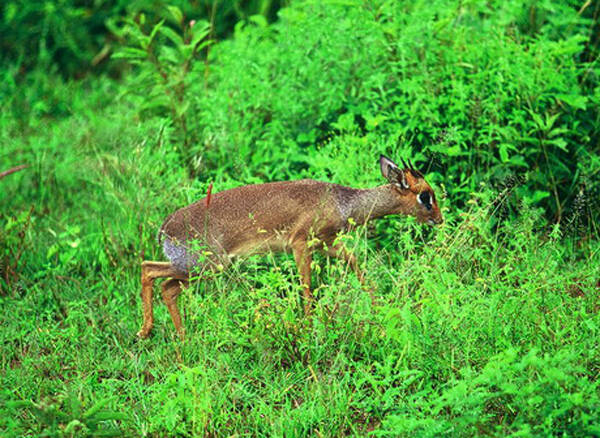Neotragus batesi
IUCN
LCBasic Information
Scientific classification
- name:Neotragus batesi
- Scientific Name:Neotragus batesi
- Outline:Ungulata
- Family:Artiodactyla Bovidae Antelope
Vital signs
- length:50-57.5cm
- Weight:2-3kg
- lifetime:About 6 years
Feature
Small black and white spots on the ears
Distribution and Habitat
The Baird's Islander is found in three distinct regions: southeastern Nigeria, east of the Niger River and east of the Cross River; Cameroon (south of the Sanaga River) to southwestern Central African Republic (west of the Sangha River); Gabon and northwest and southwest Congo (DRC) and Congo (Brazzaville), extending slightly into southwestern Uganda.
Most commonly found in moist forests and scrubland. Preferred in tropical forests, secondary forests and marginal habitats with low vegetation levels in the rainforest belt of central Africa, it is also widely found in agricultural plantations, especially banana and coffee plantations.
Appearance
The Bede's Islander is a very small antelope, weighing 2-3 kg, with a body length of 50-57.5 mm and a tail length of 45-50 cm. Females are usually larger than males. The body is in the form of a hunchback, leaning forward, with the shoulders lower than the hips. The legs are very slender, marked with white spots above the hooves. The fur on the back of the body is smooth and shiny overall, dark chestnut to dark reddish brown, becoming lighter on the sides. It is whitish at the bottom. The upper and lower surfaces of the short tail are brown. The color of the face is similar to the body, but the forehead will be darker. This is highlighted by small white patches at the base of the ears and the white color of the chin and upper throat. Only males have very short horns, usually 2-4 cm in length (maximum 5.5 cm). The horns have a ring at the base and protrude backwards in a straight line with the forehead.
Details
Bates' Pygmy Antelope (scientific name: Neotragus batesi) English: Bates' Pygmy Antelope, Dwarf Antelope, German: Batesbokchen, no subspecies.

The Bet's Island Oryx is similar in appearance to the Royal Island Oryx (Neotragus pygmaeus) of West Africa, but can be distinguished by its larger size, darker fur color, and small black and white markings on its ears.
The typical family home range of the Bet's Island Oryx is 2-4 hectares. Males are dominant, marking their territories with scent produced by their preorbital glands. Females are less territorial than males, sometimes traveling in groups. Males make nasal noises when searching for females, while both sexes usually make short noises when fleeing.
The Betschneider is a diurnal animal, active at dawn and dusk. Daytime is usually spent in dense forests, while nighttime foraging in more open habitats. This antelope is rarely found away from wooded areas with dense cover, which are used as shelter from predators. When foraging, the Betschneider will move with its head close to the ground, lifting its feet and carefully lowering them. If startled, the initial reaction is to stay in place, immediately darting into cover if a threat is detected. The species lives in a small home range (1-3 hectares in size for females and 2-4 hectares in size for males), and the pattern of use varies with the seasons. Although the home range of a male may overlap with the home ranges of several females, the homes and home ranges of males often do not overlap. However, it has not been determined whether they have true territories.

The diet of the Bede's Island Antelope includes leaves, buds, shoots, fungi, herbs, seedlings, ferns, and vine leaves. In areas where humans have encroached on their natural habitats, they also eat human food crops, such as peanuts.
The Bede's Islander antelope mates throughout the year and breeds year-round, with a peak in the late dry season and early wet season, from April to October or December. The gestation period is 180-210 days. Each litter is one calf, weighing between 1.6-2.4 kg at birth. They are weaned after about 3-4 months. Females reach sexual maturity at 16 months, while males may begin to show signs of sexual maturity at 8 months, but continue to mature until 18 months of age.
As of 2016, the total population of the Bede's Islander antelope was estimated at 219,000 and is generally considered stable. The conservation status of the Bede's Islander antelope will not change as long as large forest areas in equatorial Central Africa remain. However, the prospect of rapid human settlement in these areas in the coming decades could lead to deforestation, hunting and trapping pressures that could significantly increase. These factors could lead to a decline in the species population.
Listed in the IUCN Red List of Threatened Species in 2016 ver3.1 - Least Concern (LC).
Protect wildlife and eliminate game.
Maintaining ecological balance is everyone's responsibility!








